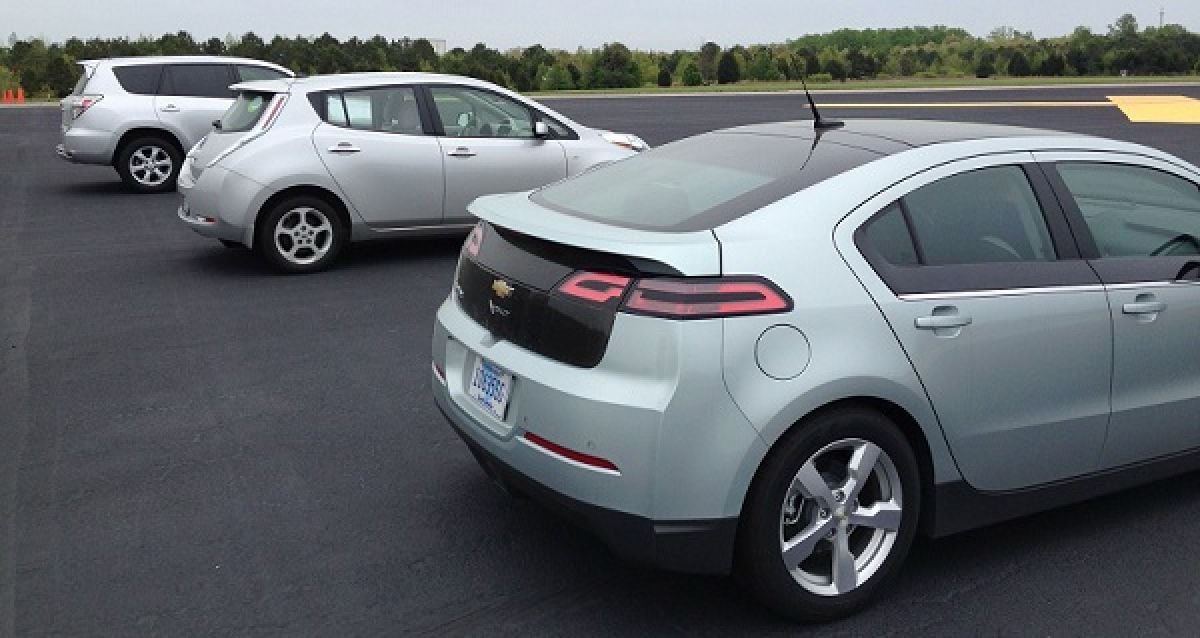Since the Chevrolet Volt and Nissan LEAF were introduced in late 2010, plug-in vehicles improved monthly year-over-year sales for 46 months in a row. That streak came to an end in October when about 9,550 plug-in electric vehicles left dealer lots, down from 10,050 in 2013.
First, the good news
It was a good month for the BMW i3 and Nissan LEAF – the i3 moved 1,159 units, its third consecutive month above 1,000. The LEAF continued its destruction of the half-hearted battery electric competition with 2,589 sales, up 28% from last October.
Nissan’s popular EV set a new record for most plug-in sales in a calendar year, and has a real shot at breaking the 30,000 barrier: the LEAF stands at 24,411 units and will need to average 2,795 deliveries over the year’s final two months to reach the threshold.
And the bad news
However, the most prominent plug-in hybrids stumbled badly in October. The Chevrolet Volt continued its ho-hum trend with 1,439 sales, down 29% from last year. Anticipation of the greatly improved 2016 model is largely to blame for the disappointing Volt sales figures.
The Toyota Prius Plug-In managed just 479 sales in October, continuing its sharp fall from a record high of 2,692 units in May. Lack of inventory appears to be partly responsible for the precipitous decline in Prius Plug-In sales.
The Ford Fusion Energi and C-Max Energi also logged mediocre totals for October, at 686 and 644 units respectively. Both models have followed a very strong summer with far lower numbers the last two months – the plug-in twins averaged 1,432 and 913 monthly sales respectively from May through August, compared to 663 for the Fusion and 661 for the C-Max in September and October.
Explanation, please
Two main factors appear to be driving the downward trend in plug-in hybrid sales: low gas prices, which have fallen below $3 per gallon and make fuel-efficient vehicles less attractive (though the effect on EVs and hybrids is not at all the same); and the full distribution of California’s green HOV lane stickers applicable to plug-in hybrids, which reached the allotted 55,000 in late September. An additional 15,000 stickers are on the way, but they will not be available until January.
The benefit of HOV lane access is surely diminishing, as growing numbers of plug-in vehicles begin to saturate the once-free restricted lanes. However, the suspension of green sticker distribution combined with favorable gas prices seem to be negatively affecting the sales of plug-in hybrids.
The same effect is yet to be seen with the most prominent battery electrics, namely the LEAF and i3. (Tesla’s Model S is difficult to analyze, given the company’s shifting focus on various global markets and the lack of reliable monthly sales data). This is likely because EV buyers are motivated by more than just fuel cost savings, while plug-in hybrid shoppers are largely seeking to minimize their operating costs without compromising on range or convenience.
Stay tuned in November and December to find out if these trends continue, and the final EV sales tally as the year winds down.






Comments
I'm one of those BMW BEV i3
Permalink
I'm one of those BMW BEV i3 October statistics..after my week-end test drive I was sold on the i3. Gas can go to a dollar..that does't change a thing for me. Clean air, free electricity (from my solar panels), and just a fun car to drive.